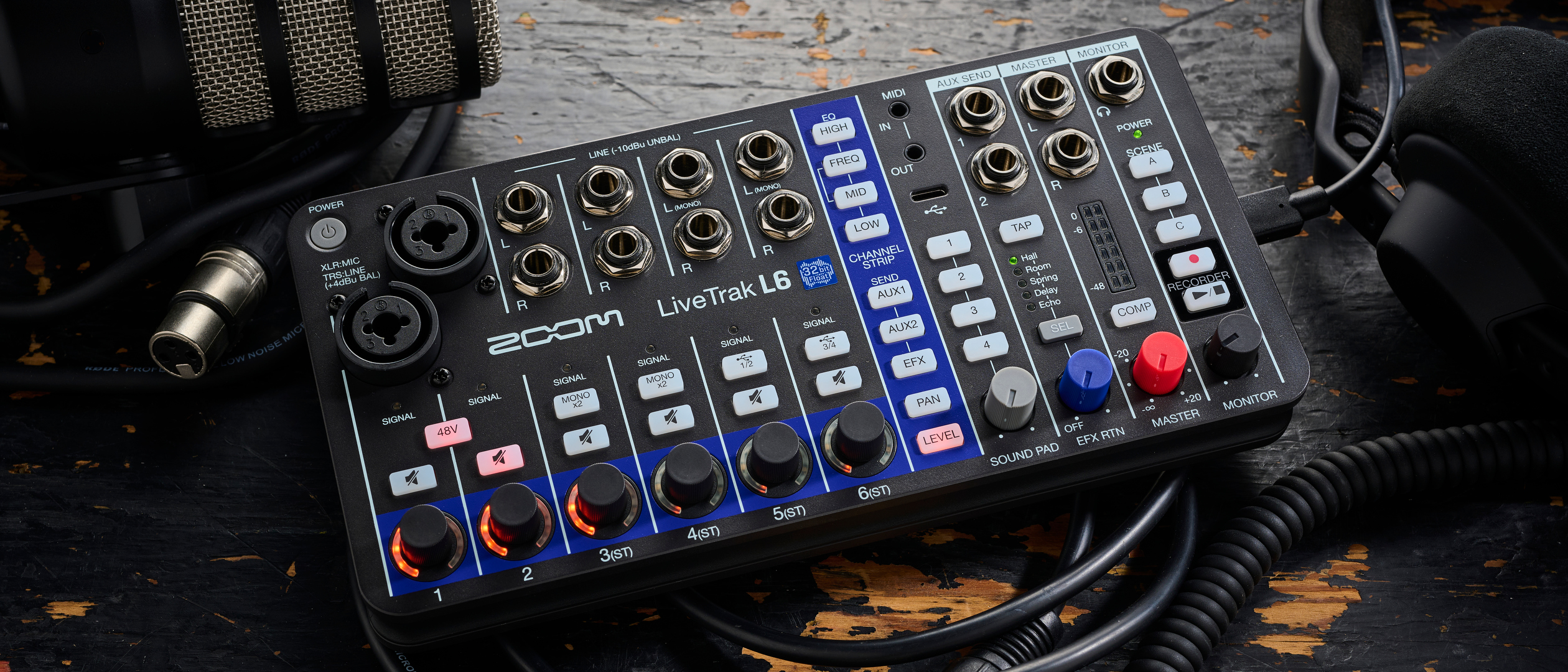MusicRadar Verdict
LiveTrak L6 is an impressive addition to the LiveTrak range. It’s small and light enough to slip into your backpack alongside a few other recording bits such as mics and headphones. But it’s also got enough going on to earn its keep in a studio or podcasting capacity.
Pros
- +
Very compact.
- +
32-bit float audio.
- +
Front panel mounted audio connections.
- +
Good MIDI implementation.
Cons
- -
No mobile app.
- -
No high impedance instrument option.
MusicRadar's got your back
What is it?
Zoom is no stranger to all-in-one multitrack mixer/recorders, utilising Micro SD storage and onboard DSP to deliver highly convenient and multipurpose devices that work as standalone mixers, multitrack recorders and USB interfaces.
Zoom’s LiveTrak series already has a bunch of models (L-8, L-12, L-20 and L-20R) delivering a range of configurations. So far these have been small, but not super compact, and that’s where the LiveTrak L6 comes in. At around 22cm by 11cm and under 5cm at its deepest it’s impressively small but still packed with features.
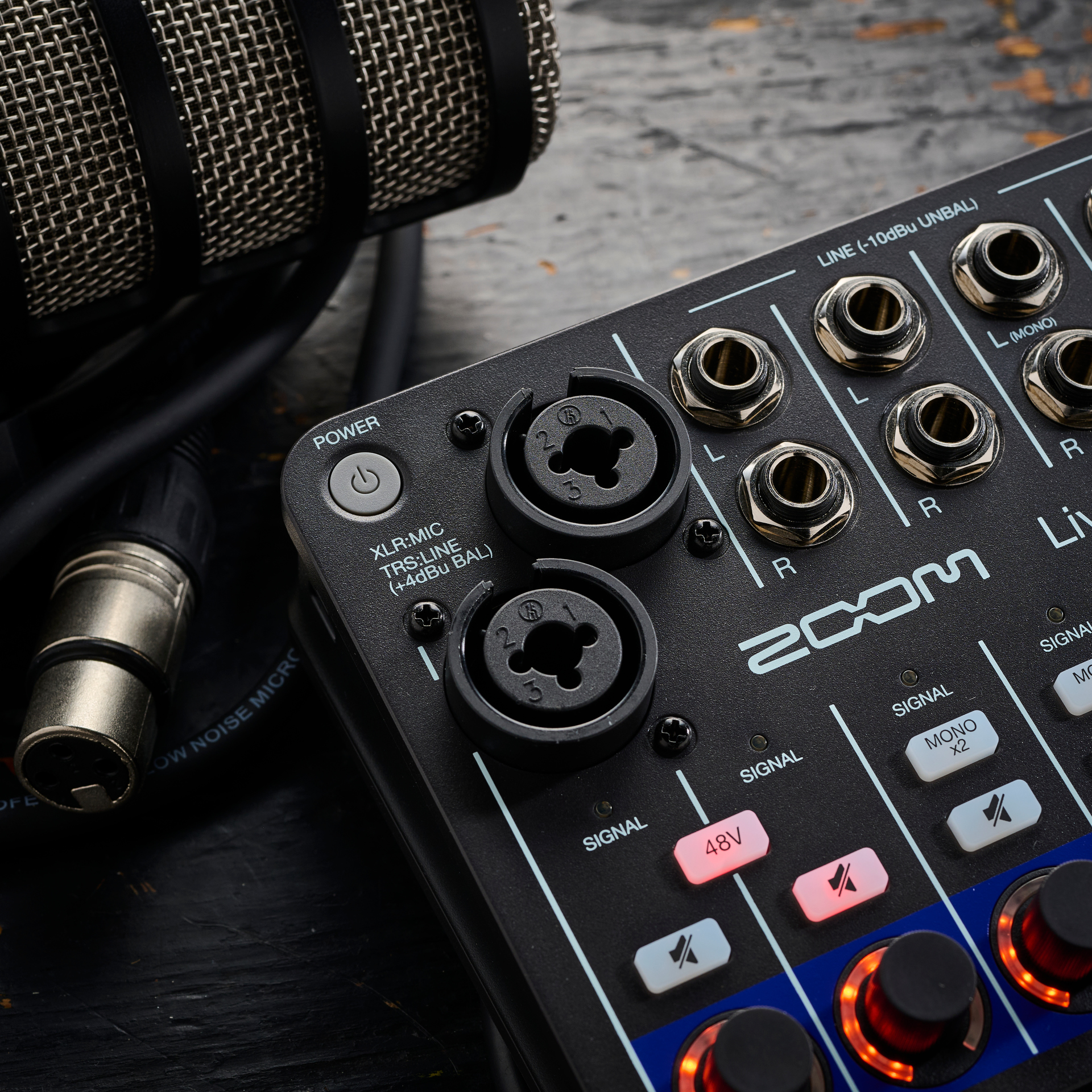
The headline spec is six input channels (two mic/line with 48V phantom and four stereo for 10 input streams) coupled with two auxiliaries, onboard effects with dedicated auxiliary, multitrack recording of all channels to Micro SD card, MIDI I/O, MIDI controller integration, four sample playback pads and 12-in/4-out USB 2.0 interfacing to desktop and mobile devices. All audio connections are on the front panel, and buttons are backlit, all of which keeps things easy to see. The L6 can also be Eurorack mounted using Zoom’s optional ERL-6 adapter.
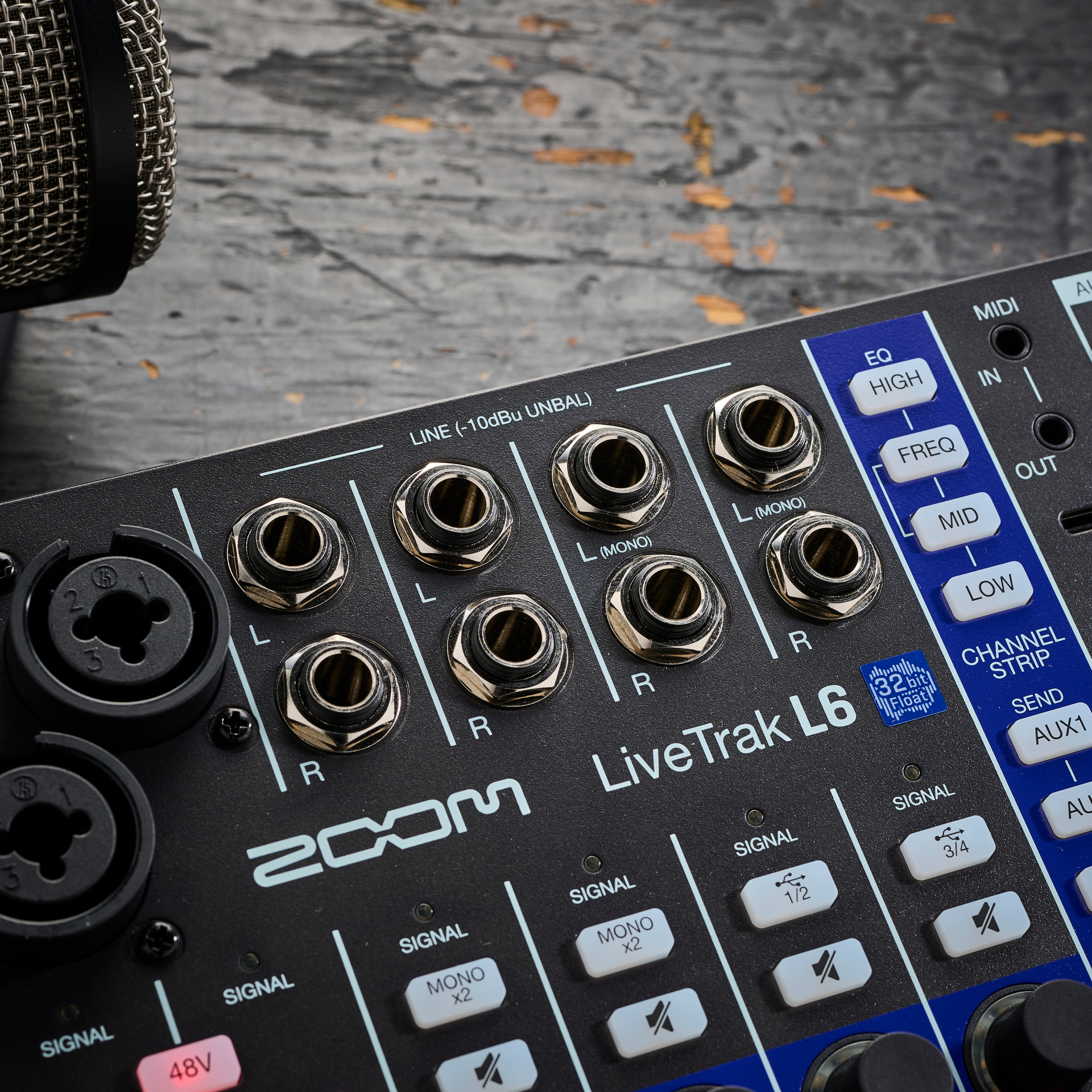
The L6 utilises 32-bit float at 48kHz both internally and for SD recording, although 24-bit is also an option when USB interfacing. The 32-bit float works alongside preconfigured gain (you’ll see there are no separate gain controls) to prevent clipping, both internally and via USB interfacing, assuming you record at 32-bit float. Onboard recording is an all-or-nothing affair (all channel multitrack or just the stereo master) and is via the record and stop/pause buttons on the right-hand side.
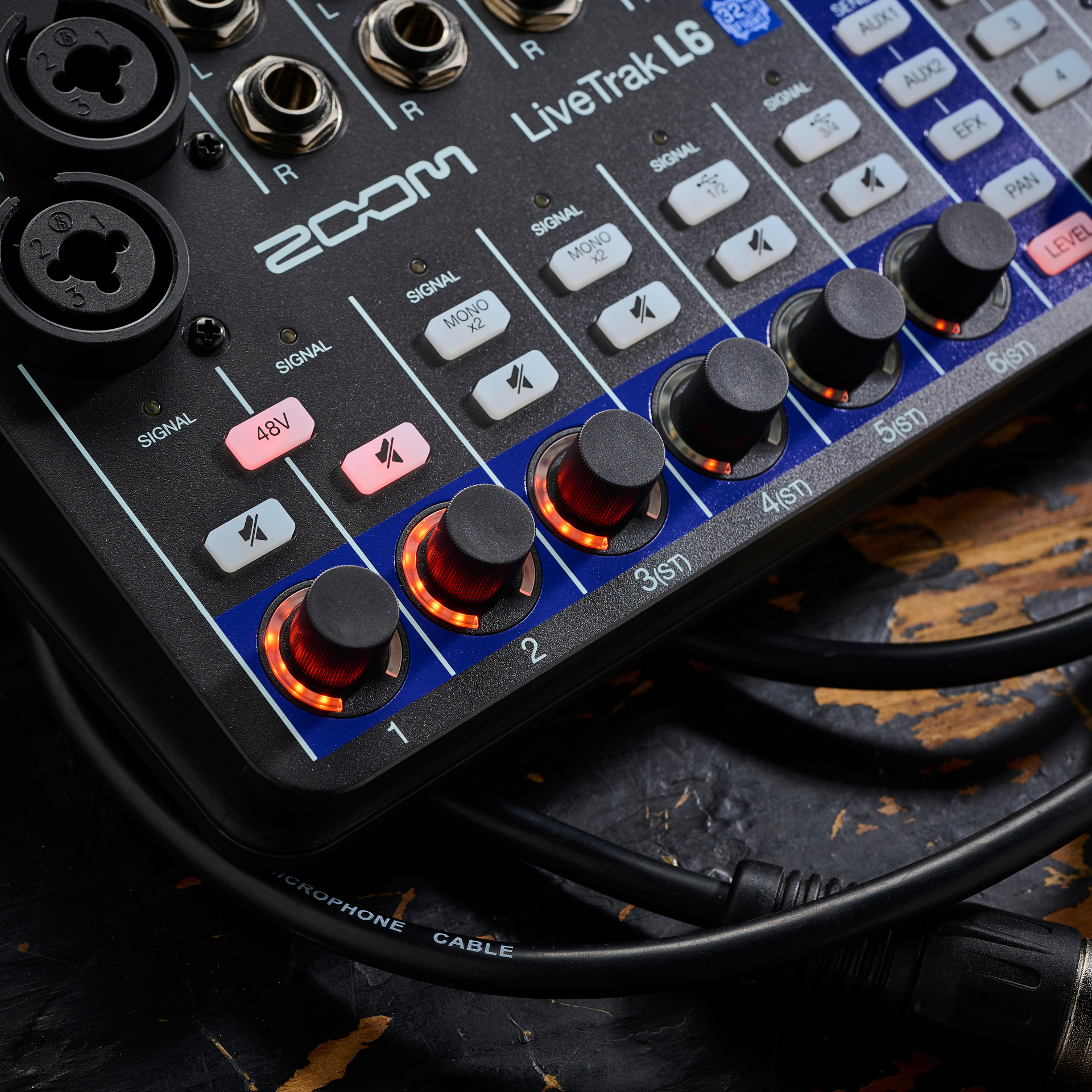
The L6 ships with an external USB-C PSU for use with the second USB-C socket on the side, but the L6 can be USB bus powered and will also run on four AA batteries.
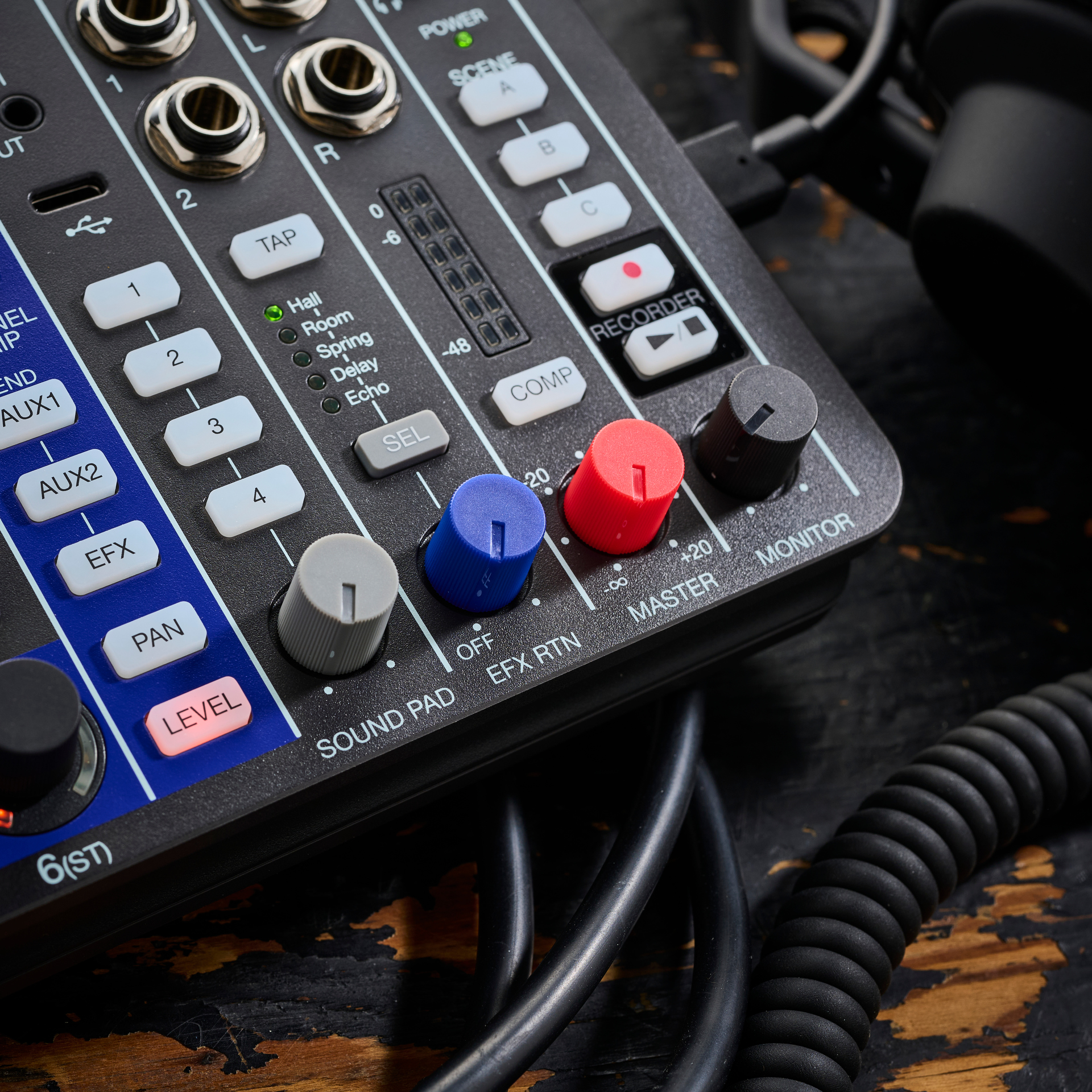
Performance
To make all these features work in a compact design they’ve had to be pretty efficient with the controls. The L6 uses halo equipped rotary encoders and these work in conjunction with the centralised channel strip for channel processing options including level, pan, EQ and auxiliary sends. The encoders can also output MIDI continuous controller data.
You’ll have spotted there’s no onboard screen, and although some key setup functions can be handled directly from the panel, for most settings you’ll need to install the L6 Editor app. This is available for desktop (Mac and Windows), but not mobile unfortunately. The editor accesses various options including internal recording mode (multitrack or stereo), MIDI features, and settings pertaining to the onboard effects. It’s also where you select file transfer mode, which allows you to access the Micro SD from your desktop and grab the onboard recorded multitrack and master stereo files.
Want all the hottest music and gear news, reviews, deals, features and more, direct to your inbox? Sign up here.
The L6 includes good MIDI support offering both standard MIDI I/O via 3.5mm jacks (you’ll need to get your own converter cables), and also MIDI control of both DAW and L6 parameters. Once set up and with assignments made in our DAW, we found the L6’s encoders ideal for controlling DAW plugin parameters.
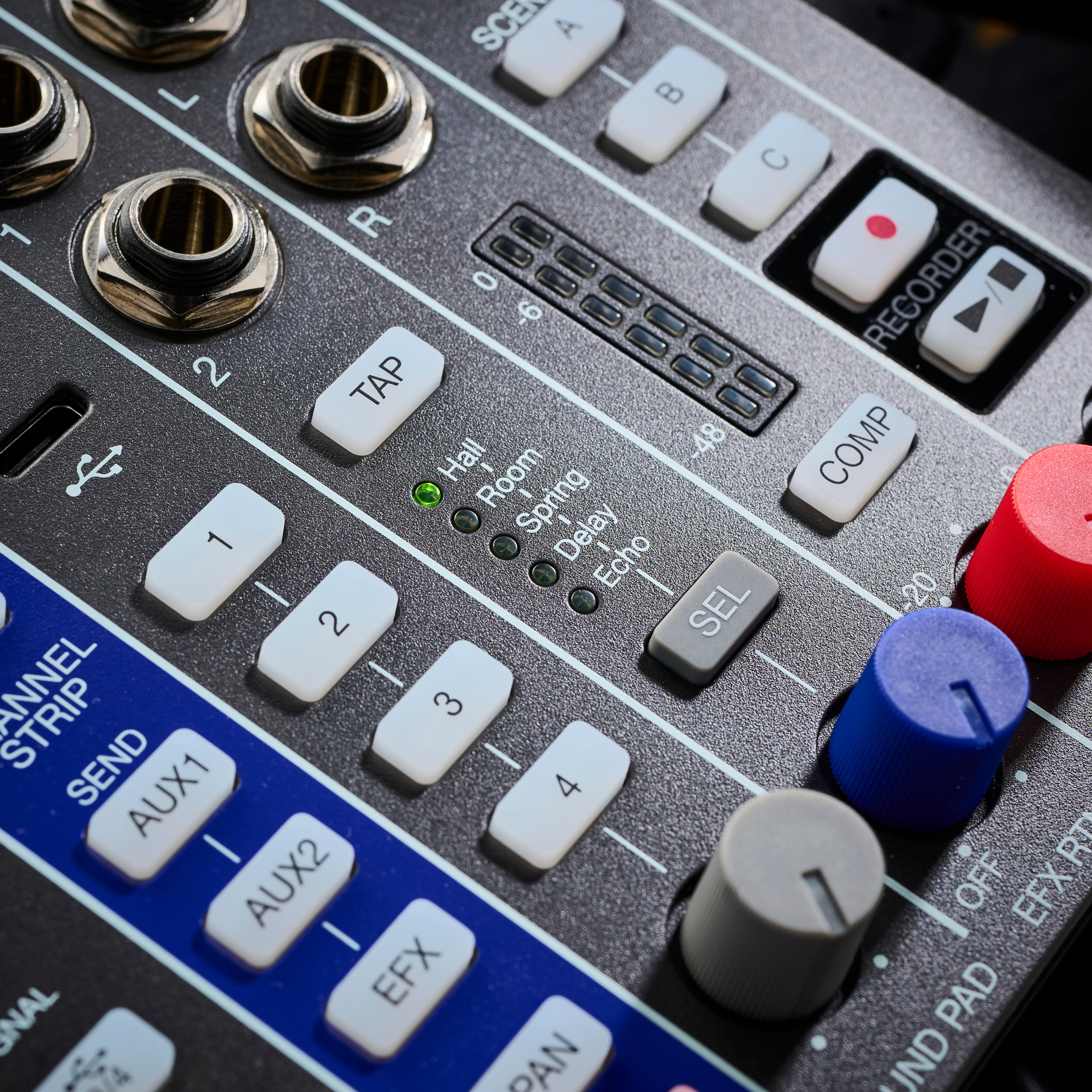
Returning to the mixer there are some further features to discuss. The first two stereo channels can each be switched to mono mode, which bypasses their default stereo L/R hard panning. Meanwhile the second two stereo channels can each be switched to input the USB DAW output streams (1-2 and 3-4 respectively). The mic/line inputs are not spec’d for high impedance passive guitar inputs, which is a real shame. That said, we found they still worked fine in this capacity. Finally, the sample playback pads can actually record the mixer output, although for more accurately trimmed assignments you’re better off loading samples using the file transfer option and selecting them via the L6 Editor, where you can also set playback mode (loop, one shot or hold).
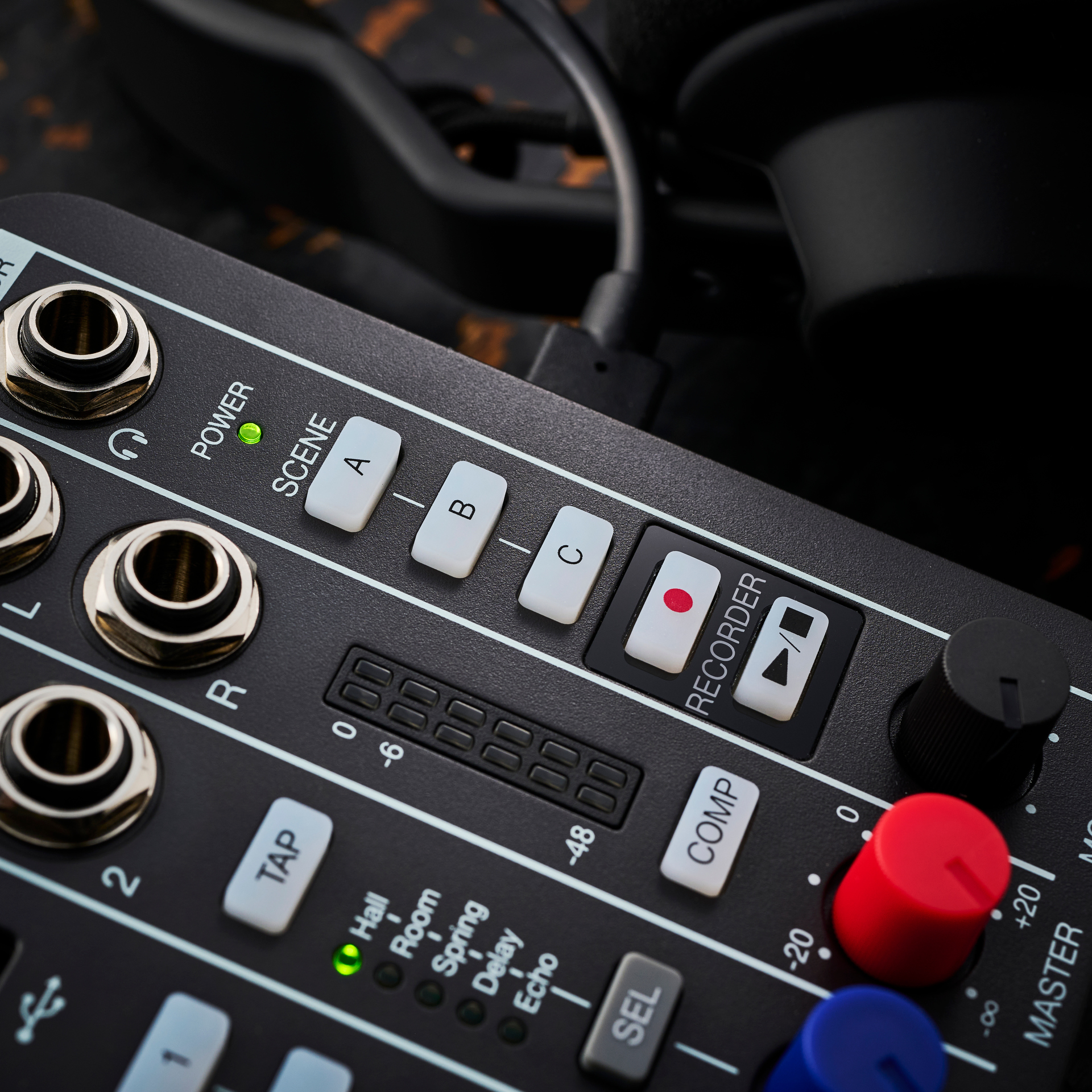
Verdict
All told, the LiveTrak L6 is a surprisingly powerful device, and although it does have some limitations, it still manages to cram a lot of features into an incredibly compact footprint. What’s more, with a plethora of backlit buttons and no menu-based screen to get lost in, operation is refreshingly simple.
MusicRadar verdict: LiveTrak L6 is an impressive addition to the LiveTrak range. It’s small and light enough to slip into your backpack alongside a few other recording bits such as mics and headphones. But it’s also got enough going on to earn its keep in a studio or podcasting capacity.
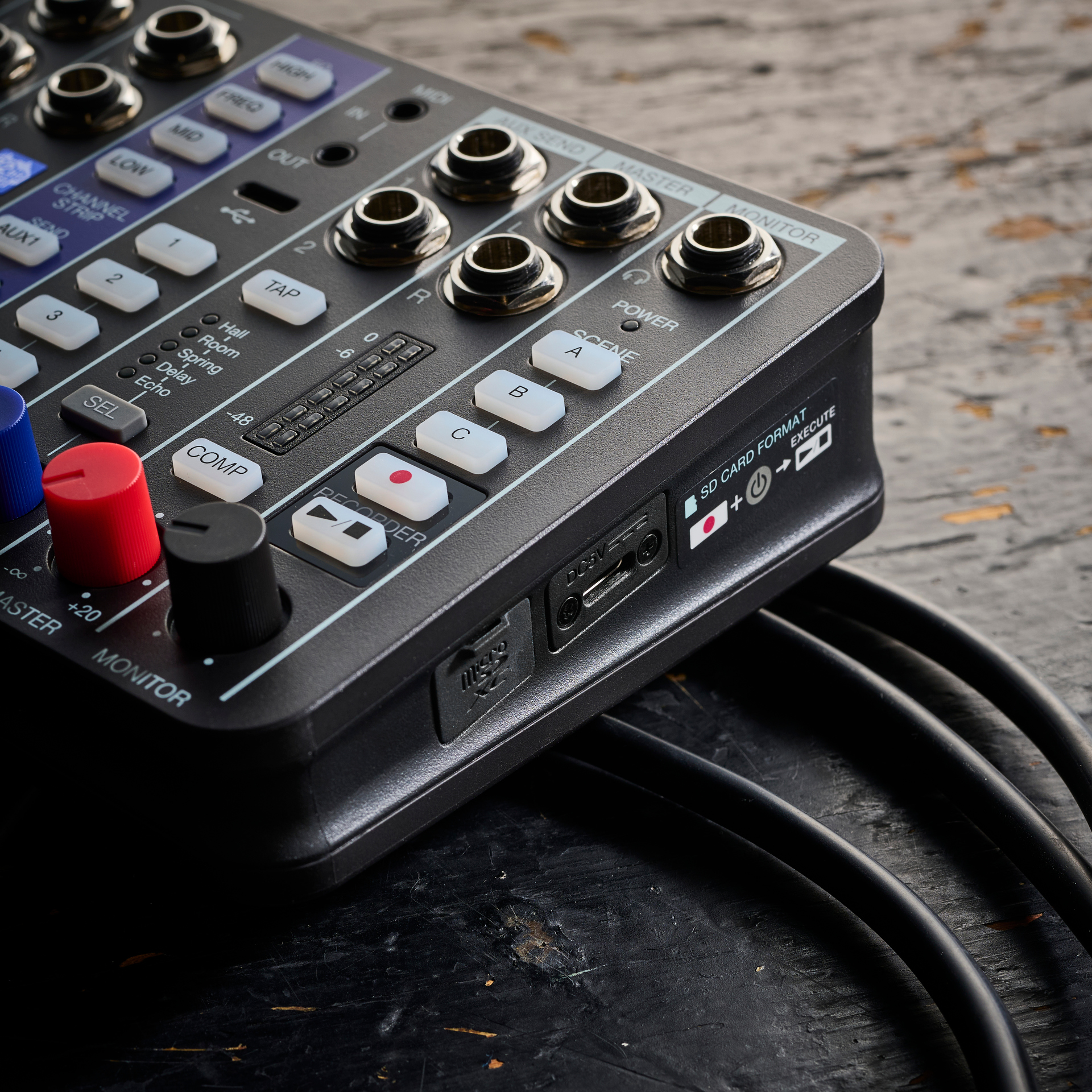
Hands-on demos
ZOOMcorporation
Specifications
- Digital mixer, 10 track recorder and USB interface.
- Recording format: Micro SD - SDHC or SDXC.
- USB 2.0 interface: 12-in/4-out.
- Inputs: 2x mic/line (XLR/TRS) with 48V phantom power, 4x stereo (TS jack).
- Outputs: Main outputs, 2x auxiliary outputs, 1x headphone.
- MIDI: MIDI I/O 3.5mm jacks, MIDI controller support.
- Audio: internal 32-bit float.
- Interface: 48kHz / 24-bit or 32-bit float.
- DSP: channel EQ, master compressor, auxiliary effect (choice of 3 reverb and 2 delay).
- USB power: bus or external PSU via USB-C socket.
- Battery power: 4xAA - Alkaline (3 hours), NiMH (3.5 hours), Lithium (7 hours).
- Size: 223(w) × 114(d) x 46.5(h) mm.
- Weight: 526g (no batteries), 618g (with batteries).
- CONTACT: Zoom
Jon is a London based platinum award winning mixer, producer, composer and club remixer with a diverse CV that spans dance, pop, rock and music for media. He’s also a long term contributor to MusicRadar's music technology tutorials and reviews. Whether working alone or collaborating he usually handles final mixdowns, so you’ll also find MusicRadar peppered with his handy mixing tips.
